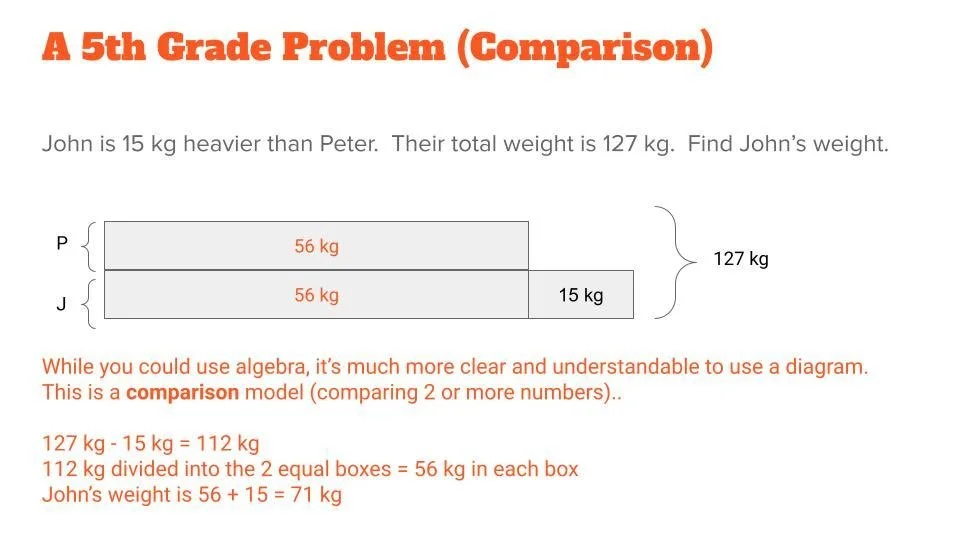What Makes Singapore Math So Different?
At WHPS, math is more than a subject—it’s a way of thinking. We use the Singapore Math framework because it develops deep, lasting understanding and flexible problem-solving skills. But the real magic lies in how we use it—through expert teaching, personalized pathways, and a commitment to helping students stretch well beyond grade-level expectations.
A Teaching Model Built on Deep Training
Before we ever opened a Singapore Math book with students, we invested heavily in preparing our teachers. Every educator on our team received extensive professional development in how to teach this approach—and we continue to deepen that training each year.
That’s because Singapore Math isn’t just a curriculum—it’s a methodology. It changes how math is taught, how students engage with ideas, and how teachers respond to individual needs in real time.
And it’s a program that makes sense. Unlike some math curricula that can feel confusing or overly abstract—especially for families navigating “Common Core” methods—Singapore Math is clear, logical, and intuitive once you see what it’s aiming to do. Parents often tell us, “I wish I had learned math this way.”
-
Singapore Math is based on a research-backed three-step approach:
Concrete → Pictorial → Abstract
Instead of jumping straight to formulas, students first build understanding with hands-on materials. Then they move to visual models—like bar diagrams—before finally working with abstract symbols and equations.
That middle step—the pictorial stage—is where the real thinking happens. Students learn to see math, not just do math. And because they’ve visualized it, they can apply their thinking flexibly to unfamiliar problems.
-
Singapore Math is uniquely well-suited to our individualized approach.
While the entire class may explore the same concept, students progress through increasingly complex problems at different levels based on their readiness.
Some students revisit foundational number sense
Others move into multi-step logic and algebraic thinking
All students are prompted to explain their reasoning, try multiple strategies, and tackle rich problems that push their thinking
With smaller student:teacher ratios, two teachers per room, and a culture of active monitoring, we adapt instruction constantly. Students can stretch far beyond their grade level—not by rushing, but by building the skills and confidence to handle more sophisticated work.
-
If you’ve ever seen a bright child hit a wall in math, it’s often because they were taught procedures without understanding why they work.
We flip that. Students don’t memorize steps—they construct meaning.
Using visual tools like bar models, they solve complex problems involving fractions, ratios, and variables. They’re not repeating—they’re reasoning. That’s why this method consistently develops some of the strongest mathematical thinkers in the world.
-
Singapore Math homework is short but meaningful—typically 3–4 problems designed to spark deep thinking.
Students are encouraged to use bar models, sketch out ideas, and talk through their logic. And when a child gets stuck, the goal isn’t to give them the answer—it’s to help them see the problem in a new way.
We also support families with tools and strategies to guide their children—especially when the thinking feels appropriately challenging.
-
Many traditional programs rely on copying problems or lengthy busywork. That creates extra steps and barriers that have nothing to do with understanding math.
Singapore Math is different.
Built-in scaffolds reduce unnecessary writing
Visual strategies support all types of learners
Students spend less time copying and more time thinking
Because of this, our program supports a wide range of learners—and helps every child move forward in their own zone of challenge.
-
Bar models are introduced in early elementary and grow with the student.
They become a powerful method for visualizing problems involving:
Addition and subtraction
Multiplication and division
Fractions, ratios, and percentages
Multi-step and algebraic problems
There are two main types:
Comparison Models – comparing quantities
Part-Whole Models – representing totals and parts
These tools help students understand the structure of a problem, not just find an answer.
Bar Model Examples
-

📊 Comparison Models
Used to compare two or more quantities (e.g., John weighs 15 kg more than Sam). Students learn to start with equal bars and visually show differences.
-

🧩 Part-Whole Models
Used when a total is split into parts (or vice versa). These models help students think flexibly about wholes, differences, and missing parts—and adapt their models as problems grow in complexity.
These models teach students to think through a problem, not just “solve” it.
The WHPS Difference
Many schools adopt Singapore Math materials. At WHPS, we adopted the practice—layered with expert instruction, individualized pacing, and the freedom to accelerate when students are ready.
That’s why by the time our students reach 5th grade, many are confidently solving problems that mirror 7th, 8th, or even high school algebra-level thinking.
It’s not about skipping grades. It’s about building the kind of deep, connected understanding that prepares children for anything.


